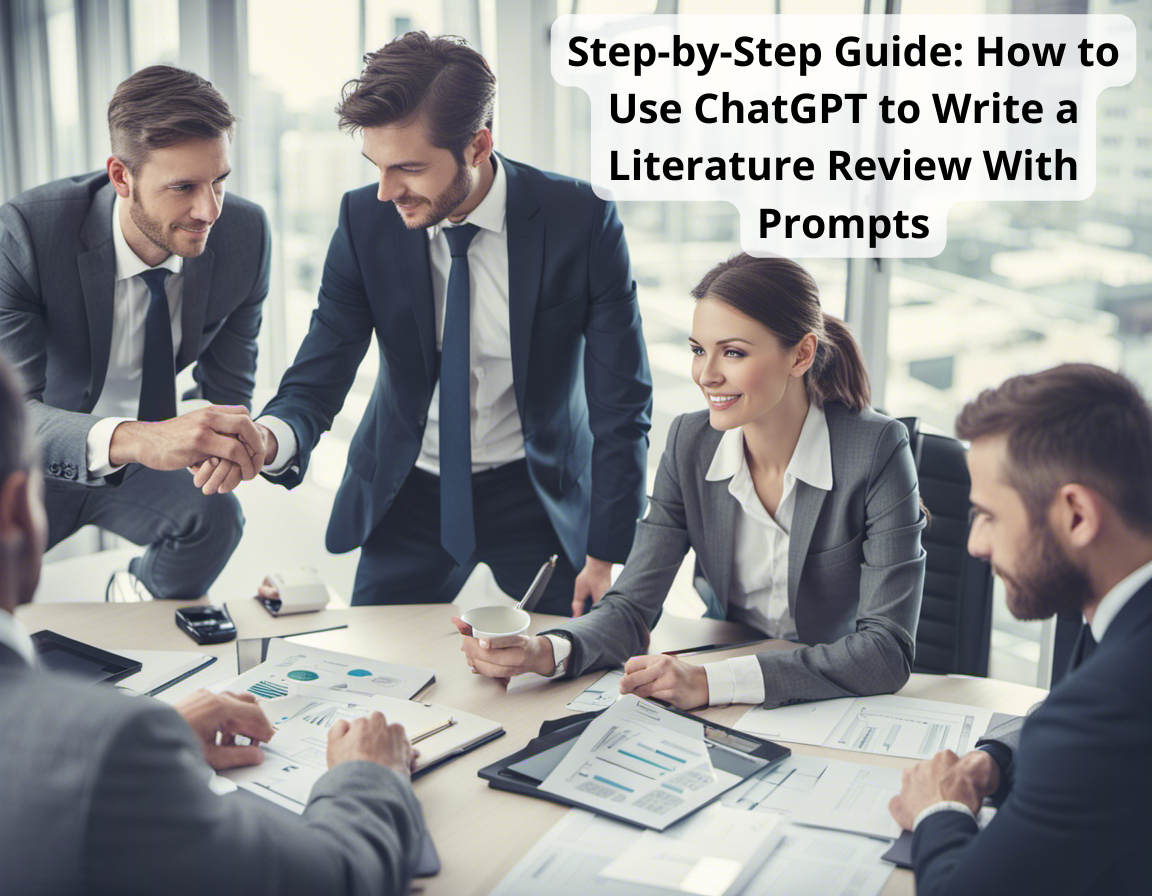
Writing a literature review can be a challenging task for researchers and students alike. It requires a comprehensive understanding of the existing body of research on a particular topic. However, with the advent of advanced language models like ChatGPT, the process has become more accessible and efficient.
In this step-by-step guide, ilovephd will explore how you can leverage ChatGPT to write a compelling literature review that is both informative.
Discover how to effectively utilize ChatGPT as a research assistant to write a comprehensive and SEO-friendly literature review. Follow our step-by-step guide to leverage this powerful tool, optimize your review for search engines, and contribute to the scholarly conversation in your field.
Step 1: Defining Your Research Objective Before diving into the literature review process, it is crucial to define your research objective.
Clearly articulate the topic, research question, or hypothesis you aim to address through your literature review. This step will help you maintain focus and guide your search for relevant sources.
Step 2: Identifying Keywords and Search Terms To effectively use ChatGPT to assist in your literature review, you need to identify relevant keywords and search terms related to your research topic.
These keywords will help you narrow down your search and gather pertinent information. Consider using tools like Google Keyword Planner or other keyword research tools to discover commonly used terms in your field.
Step 3: Familiarizing Yourself with ChatGPT Before engaging with ChatGPT, it is essential to understand its capabilities and limitations. Familiarize yourself with the prompts and commands that work best with the model.
Keep in mind that ChatGPT is an AI language model trained on a vast amount of data, so it can provide valuable insights and suggestions, but it’s important to critically evaluate and validate the information it generates.
Step 4: Generating an Initial Literature Review Outline Start by creating an outline for your literature review. Outline the main sections, such as the introduction, methodology, results, discussion, and conclusion.
Within each section, jot down the key points or subtopics you want to cover. This will help you organize your thoughts and structure your review effectively.
Step 5: Engaging with ChatGPT for Research Assistance Once you have your outline ready, engage with ChatGPT for research assistance.
Begin by providing a clear and concise prompt that specifies the topic, context, and any specific questions you have. For example, “What are the current trends in [your research topic]?” or “Can you provide an overview of the main theories on [your research question]?”
Step 6: Reviewing and Selecting Generated Content ChatGPT will generate a response based on your prompt. Carefully review the content generated, considering its relevance, accuracy, and coherence.
Extract key points, relevant references, and insightful arguments from the response and incorporate them into your literature review. Be sure to cite and attribute the sources appropriately.
Step 7: Ensuring Coherence and Flow While ChatGPT can provide valuable content, it’s important to ensure the coherence and flow of your literature review.
Use your critical thinking skills to connect the generated content with your research objective and existing knowledge. Rearrange, rephrase, and expand upon the generated text to ensure it aligns with the structure and purpose of your review.
Step 8: Editing and Proofreading Once you have incorporated the generated content into your literature review, thoroughly edit and proofread the document.
Check for grammatical errors, consistency in referencing, and overall clarity. This step is crucial to ensure your literature review is polished and professional.
Prompts you can use when engaging with ChatGPT for research assistance in writing a literature review:
“Can you provide an overview of the main theories and concepts related to [your research topic]?”
“What are the current trends and developments in [your research field]?”
“Can you suggest some key studies or research papers on [specific aspect of your research topic]?”
“What are the main methodologies used in conducting research on [your research topic]?”
“Can you provide a critical analysis of the existing literature on [your research question]?”
“Are there any gaps or areas of controversy in the literature on [your research topic] that need further exploration?”
“What are the key findings and conclusions from the most recent studies on [your research topic]?”
“Can you suggest some reputable journals or publications explore for relevant literature in [your research field]?”
“What are the different perspectives or schools of thought in the literature on [your research topic]?”
“Can you provide a summary of the historical background and evolution of research on [your research topic]?”
Remember to provide clear and specific instructions in your prompts to guide ChatGPT in generating relevant and accurate content for your literature review.
Using ChatGPT to write a literature review can greatly facilitate the research process. By following a step-by-step approach, researchers can effectively leverage ChatGPT’s capabilities to gather insights, generate content, and enhance the quality of their literature review. However, it is important to approach the generated content critically, validate it with reliable sources, and ensure coherence within the review.
